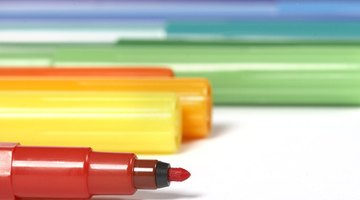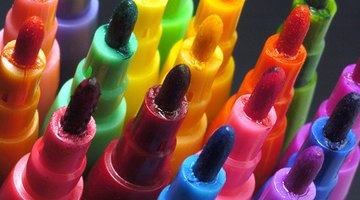What Chemicals Are Used in Washable Markers?
Table of Contents
Markers, also known as felt-tipped pens, are used by adults and children alike. Crayola introduced permanent markers to the market in 1978, however washable markers weren’t introduced until 1987.

Characteristics

Washable markers use food-coloring dyes, carboxylic acids and carboxylates, and a water-based solvent which prevents the color from sticking to surfaces. Modern washable markers feature vibrant dark colors, and do not look like watercolors. Traditional permanent markers are made from a pigment colorant, alcohol solvent and resin polymer.
Benefits

Teachers and parents do not need to worry about damaged clothing or walls when children work with washable markers.
Cleaning

Clean washable marker off skin or clothing by washing with soap and water. Remove washable marker off walls by gently wiping with a damp sponge.
Safety

According to the Material Safety Data Sheet (MSDS), Crayola Washable Markers are safe for inhalation and skin contact. Eye contact is relatively safe; however, flush eyes with water until no trace of chemicals remain. Contact your local poison control center if your child ingestion occurs.
Tip

Dried out washable marker tips may be revived by dipping the felt tip into water until a bit of the color leaks out. Recap and leave the marker undisturbed for about 15 minutes.
References
Resources
Writer Bio
Daniella Lauren has worked with eHow and various new media sites as a freelance writer since 2009. Her work covers topics in education, business, and home and garden. Daniella holds a Master of Science in elementary education and a Bachelor of Arts in history from Pensacola Christian College.
Photo Credits
- marker image by AGphotographer from Fotolia.com
- marker image by AGphotographer from Fotolia.com
- felt pen (marker) image by AGphotographer from Fotolia.com
- feutres image by thierry planche from Fotolia.com
- faucet image by Laura Dynan from Fotolia.com
- drawing at home image by Renata Osinska from Fotolia.com
- coloured pens image by Christopher Hall from Fotolia.com
More Articles



